12. Ryuzo And The Seven Henchmen
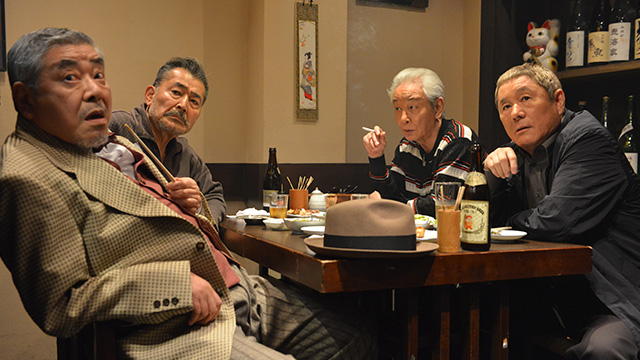
Kitano’s newest film at time of writing is 2015’s Ryuzo 7, also known as Ryuzo and the Seven Henchmen. A comedy about an old retired Yakuza which oddly might be the most accessible film in the whole Kitano filmography.
Ryuzo is a former Yakuza. Now retired he enjoys a quiet life living with his salaryman son Ryuhei. He still enjoys meet ups with his loyal former lieutenant Masa, although their attitudes and tempers can often frighten the local civilians.
After a local swindler tries to hustle Ryuzo out of 5 million yen, detective Murakami informs him that it was the Keihin Rengo gang that were behind it. Ryuzo reunites his seven former henchmen to strike back against the gang, only then do they discover they have become frail in their old age. They must put their brains together to come up with a plan to overcome their weaknesses.
Kitano has to be admired for making a comedy which is undemanding and unpretentious. There are lovelable old men that you can’t help but laugh at. And there are fart jokes galore! Kitano pops up with a small role as the detective Murakami.
74 year old Tatsuya Fuji carries the film with his star power and an effortless performance, he really embodies the character in every way while having fun doing it. Takeshi Kitano is now 70 years old himself, so many of these jokes or situations could be from personal experience. Or maybe Kitano is just having fun laughing in the face of old age.
11. Dolls
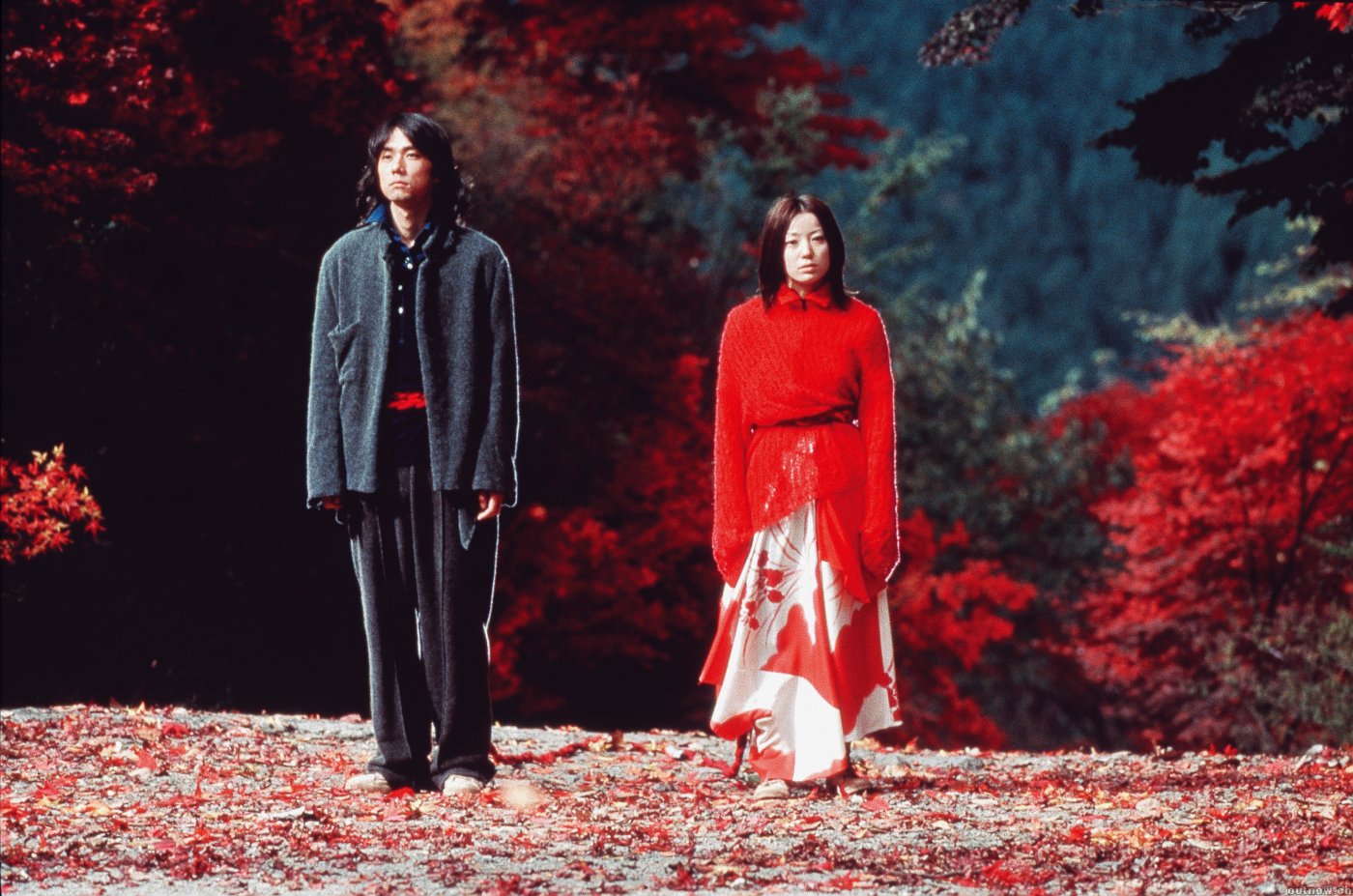
Takeshi Kitano made his most artistic film in 2002 with the romatic-drama Dolls. A story based loosely on a traditional bunraku play involving 3 different stories about undying love.
The first story follows Matsumoto who rejects his engagement to his fiancée Sawako after his parents put pressure on him to marry his bosses daughter. When Sawako attempts suicide that results in her becoming brain-damaged and living in a nursing home, Matsumoto devotes his life to caring for her. They run away together and are bound together by a length of rope to stop her from wandering.
The second story follows a Yakuza boss named Hiro. As a youth he fell deeply in love with a girl, but when he joined the Yakuza he decided it would be too complicated so he broke it off. Years later, he returns to the park to see if he can find her again.
The third story follows a man named Nukui who is obsessed with a pop idol named Haruna. When Haruna is involved in a car accident which leaves her disfigured she refuses to be seen by any of her fans. Nukui is determinted to meet her, and will do anything to achieve this.
Like a bunraku play, Dolls pacing is slow and deliberate, but utterly beautiful to look at. It’s Kitano’s most stunning film with incredible cinematography. From the cherry blossoms to the autumn reds, the film is full of vibrant imagery. Dolls is a journey of 3 lovers giving their all and sacrificing everything to be with their lovers, and although this film isn’t for the impatient, the stories he creates are powerful and emotional.
10. Beyond Outrage
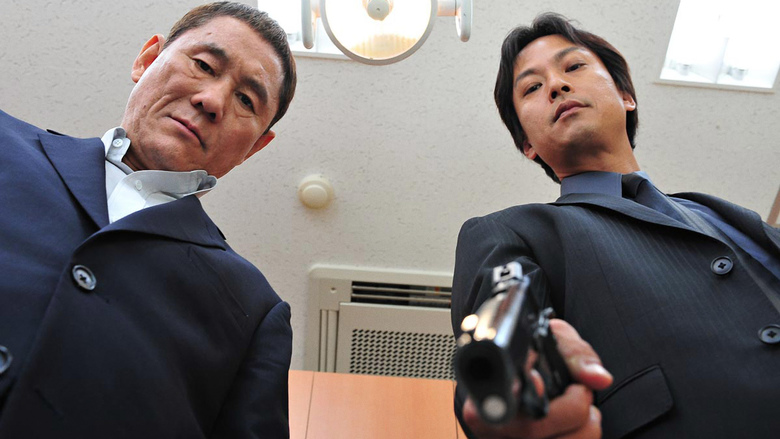
It would take until Kitano’s 16th film before he made an official sequel. And it lives up the original in practically every single way.
Picking up years after the events of Outrage, Kato is now leading the Sanno family. Working directly under him is hot-headed Ishihara. There’s currently friction between the Sanno family as some don’t approve of their government co-operation ways, plus many feel Ishihara and other members have been promoted prematurely. Criminal detective Kataoka is determined to bring down the Sanno family by any means necessary. This includes receiving help from a rival Yakuza and getting Otomo released from prision early.
The pacing is slow for the first half of the film as the story is pieced out in secret meetings until it slowly begins to boil over. Another violent affair for Beat Takeshi ensues. Racking up the body count as Yakuza are blasted away in bloody succession. But staying true to the original, there are extremely painful creative killings too. Another drill makes a flinching appearance. And there is even a scene involving a baseball batting cage that will go down as legendary.
Beyond Outrage has a much less complex plot than the original with more exposition from the characters. It’s easier to follow what family is doing what, and who is double crossing who. Which in turn, makes the conclusion even more enjoyable.
Kitano has announced his next project is the third in the trilogy, Outrage: Final Chapter.
9. Outrage
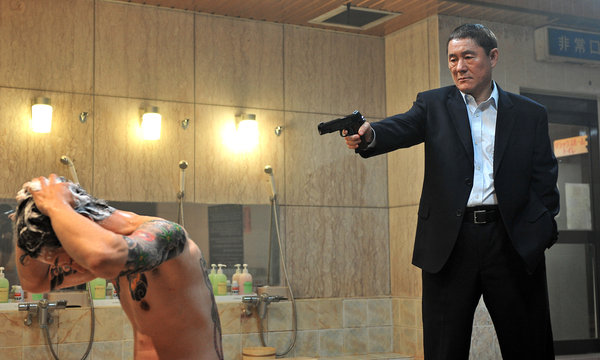
After nearly a ten year absence Takeshi Kitano would return to the genre that gave him international acclaim. After 2000’s Brother Kitano appeared to be distancing himself from Yakuza films and focused on making unconventional art-house films. Outrage was the return to the genre which proved to be a hit and would go on to spawn a trilogy.
A modern gangster film focusing on the power struggle of the powerful Sanno Yakuza family. The Chairman is unhappy with a current business deal one of his men Ikemoto has with the Murase family. Rather than Ikemoto deal with it himself, he asks Otomo to take care of business by distancing themselves from the opposing family by any means necessary.
The results that follow are a complex plot which unravels through a blood bath of violent shoot-outs, pinky-choppings, torture, beatings and every character constantly berating each other. Kitano shines as a gangster that is unreadable in his movements and motives. He could snap at any minute without expectation. Kitano has a marvellous face that can tell a whole range of emotions or simply none at all, as he sits dead-faced waiting patiently.
Divisive for it’s violence, Outrage premiered in competition at the 2010 Cannes Film Festival with the film receiving some criticism. For Kitano this is the most Yakuza heavy themed film he has ever made. In essence, Outrage is the blueprint for what a Yakuza film should be.
Outrage is accompanied by a ferocious electronic soundtrack from Keiichi Suzuki that wouldn’t feel too out of place in an 80s horror film.
8. A Scene At The Sea
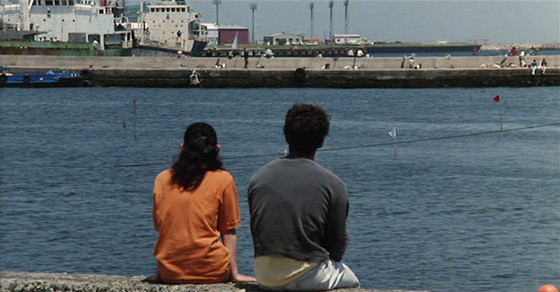
Kitano took a break from Yakuza and police themes for his third outing, a more relaxed subtle film with no violence in sight. Instead the story deals with themes like disabilities and romance, this was a welcome surprise for the director.
Shigeru is a deaf rubbish collector whose life is changed when he stumbles across an abandoned surfboard. His dedicated girlfriend Takako, who also suffers from a hearing impairment, helps Shigeru on his determined mission to learn the sport of surfing.
A Scene At The Sea would mark the start of a perfectly matched collaboration between Kitano and the award winning composer Joe Hisaishi. This new partnership would last 9 years, covering 7 different films. Hisaishi’s main theme ‘Silent Love’ suits the beautiful beach and ocean backdrops as well as the calming pacing and the almost silent nature of the story.
Featuring hardly any dialogue and main characters that don’t talk. The fact Kitano made this a brilliant film shows his real strength as a director and storyteller. The main love story between Shigeru and Takako is told beautifully, without the use of speaking it’s still clear how they really feel for each other. Kitano often puts the viewer in to their shoes, experiencing situations how a deaf person would, which is another admirable trait.
7. Kid’s Return
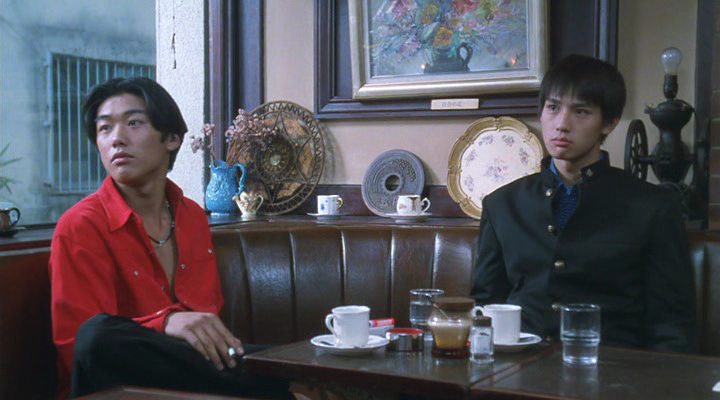
In August 1994 Takeshi Kitano was involved in a motorcycle accident which hospitalized him and left him with partial paralysis on the right side of his face. He required reconstructive surgery and rehabilitation which ultimately resulted in his signature facial tic. Many speculated that Kitano would never work again but as soon as his physical therapy was complete, he quickly went about making Kid’s Return.
Two high school dropouts and best friends, Masaru and Shinji try to find direction and meaning in their lives. Both of them take up boxing but their friendship would soon start to drift apart. As one of them struggles as an up-and-coming boxer, the other quits and joins the local Yakuza.
While still recovering Kitano stays behind the camera, working as the director, writer and editor for the at-times autobiographical film Kid’s Return. Touching upon stories from his own life, he deals with boxing and stand up comedy themes. His near death experience left many worrying, but his time spent recovering and recuperating actually made him a more mature film-maker.
Although more time is spent focusing on the boxing aspect of the film, the heart of the film is really about friendship. The two leads Ken Kaneko (Masaru) and Madanobu Ando (Shinji) have excellent on-screen chemistry which wills you to cheer them on. The film also elevated Masanobu Ando as an actor who would go on to star in films such as Battle Royale, Sukiyaki Western Django and Nightmare Detective.
Another one of Kitano’s more low key films. Kid’s Return could be classified as a boxing movie, but instead of Eye of The Tiger during the training sequences we have Joe Hisaishi’s composed theme ‘Kid’s Return’ which is just as energetic and motivational.